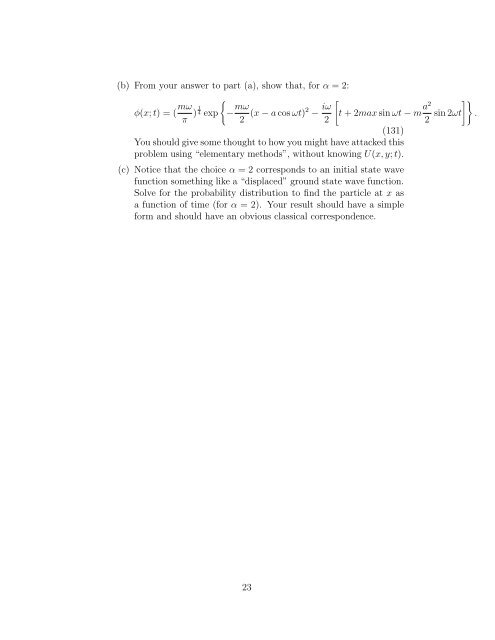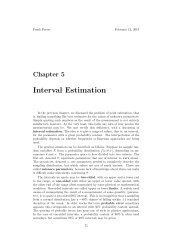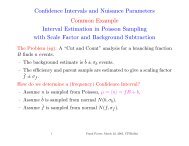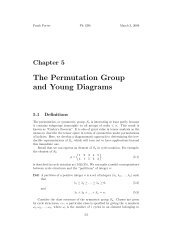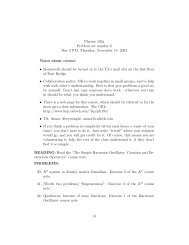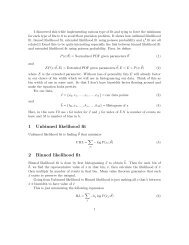1 Introduction 2 Resolvents and Green's Functions
1 Introduction 2 Resolvents and Green's Functions
1 Introduction 2 Resolvents and Green's Functions
Create successful ePaper yourself
Turn your PDF publications into a flip-book with our unique Google optimized e-Paper software.
(b) From your answer to part (a), show that, for α = 2:<br />
φ(x; t) = ( mω<br />
π ) 1 4 exp<br />
{<br />
− mω<br />
2 (x − a cos ωt)2 − iω 2<br />
You should give some thought to how you might have attacked this<br />
problem using “elementary methods”, without knowing U(x, y; t).<br />
(c) Notice that the choice α = 2 corresponds to an initial state wave<br />
function something like a “displaced” ground state wave function.<br />
Solve for the probability distribution to find the particle at x as<br />
a function of time (for α = 2). Your result should have a simple<br />
form <strong>and</strong> should have an obvious classical correspondence.<br />
[<br />
t + 2max sin ωt − m a2<br />
2 sin 2ωt ]}<br />
.<br />
(131)<br />
23


